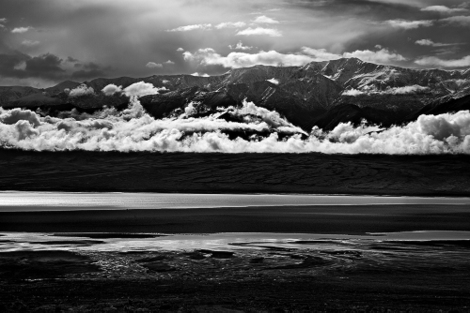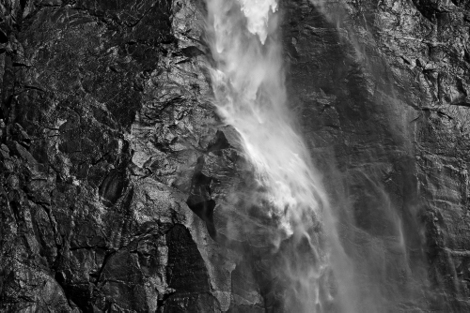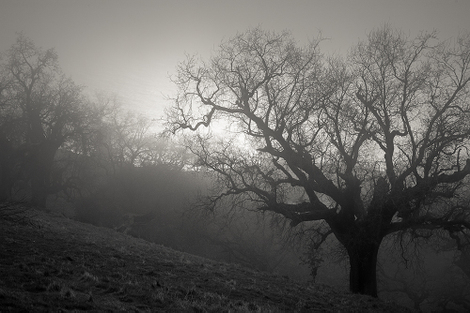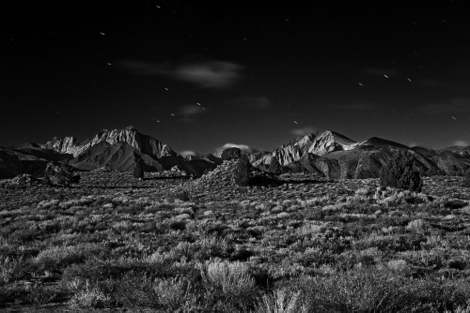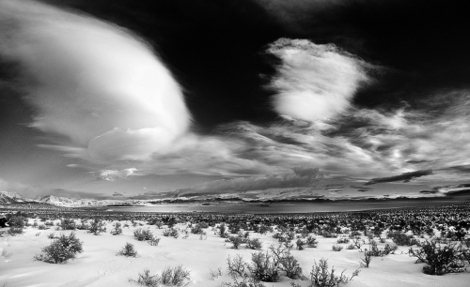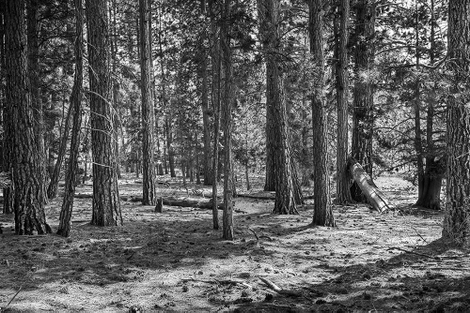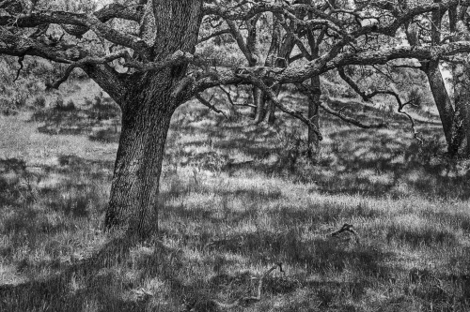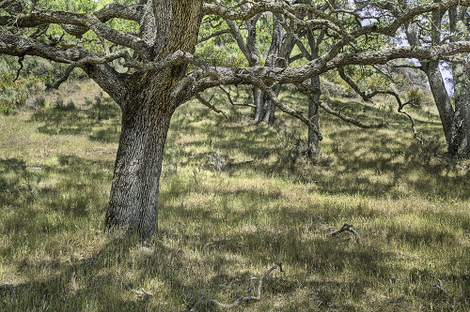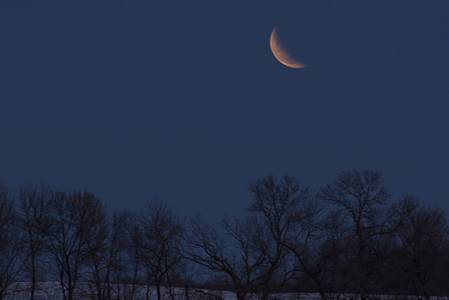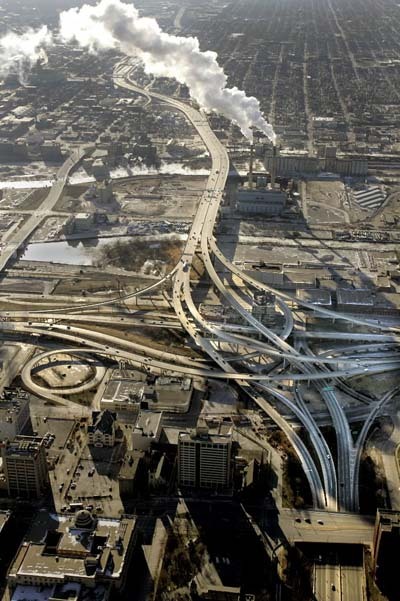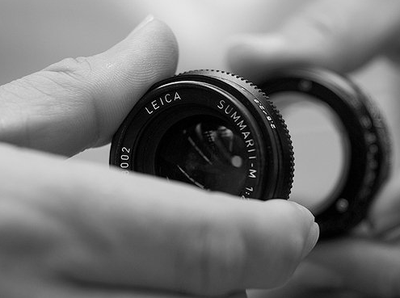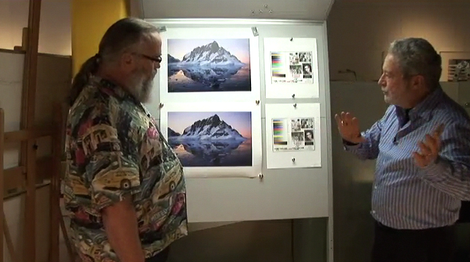Recent Posts
- What Features Would You Like to See on a New TOP?
- The Online Photographer Will Be Relaunching (Blog Note)
- The Thing I Miss Most About the Film Era
- Wayward Photographer Triggers Near-Riot At U.S. Open
- Open Mike: The Midnight Ride (OT)
- Editing By Magic
- The Killip Conundrum
- Kristine Hinrichs, Photographer of Milwaukee
- Jim and Becky's Vermont Oatmeal (OT) (A One-Paragraph Post)
- One Kind of Person EVs Are Good For (OT) (A One-Paragraph Post)
+ Sponsors
« July 2007 | Main | September 2007 »
August 2007
Friday, 10 August 2007
Photography Does Not Exist Any More
Posted on Friday, 10 August 2007 at 12:23 AM | Permalink | Comments (90) | TrackBack (0)
Wednesday, 08 August 2007
Digital B&W: The Expert View
By Rob Reiter
I'm surprised to still hear people knocking the highlight capabilities of digital cameras. Good luck ever getting anything useful from JPEGs, but a good DSLR in RAW mode does a very good job indeed for B&W work, if you're willing to roll up your sleeves and learn how to use it. And if your shooting style allows for bracketed exposures to create High Dynamic Range images, you can easily come up with images whose dynamic range is limited only by the paper/ink/software used to print it.
I've been shooting for 40 years and until making the switch to digital in early 2005, had been primarily shooting 35mm slide film using Nikons and a Hasselblad XPAN, although in the '70s I also shot 4x5 B&W and some 6x7 stuff, mostly Tri-X.
Before the switch, my enthusiasm for photography, which was mostly landscape work, had waned considerably, mostly because of the contrasty nature of modern slide films. For years, my business was custom Ilfochrome (Cibachrome) printing, and even with contrast masking, I was frustrated with getting good prints. Scanning film and making inkjet prints, first on a ColorSpan Giclée Printmaker and then Epson 9600/9800 printers, was a big improvement, but I was still limited to what was on the film, although I could at least get more of it digitally. Color negative film never appealed to me, but I was appreciative of the better dynamic range it offered.
Although it was not something I was especially looking for when I first bought a Canon 20D 8-megapixel DSLR, its increased dynamic range in color work was the most apparent improvement over 35mm slide film. Resolution was better and the lack of grain was nice, but the estimated three stops more dynamic range that RAW files gave me over slide film was an unexpected revelation. There was a creamy quality to everything I printed that made even the duplicate test shots done on slide film just look harsh in comparison.
All this was apparent immediately, using single exposures in RAW, but making multiple adjustments of that one file for highlights, midtones and shadows, that were then combined in Photoshop with adjustment layers and layer masks. Later I began experimenting with bracketed shots and Photoshop's HDR capabilities, which are improved in CS3. Now I've gone further, running bracket shots through HDRsoft's Photomatix Pro first before doing the final tweaking in Photoshop. And one pleasant surprise was to discover that single RAW exposures, made into three versions as before, could also benefit from a run through Photomatix, just as I did with in camera bracketed shots.
The images make very nice prints. I can honestly say that in color or black and white, I simply don't have blown out highlights or blocked up shadows any more, unless by intent. I've got a long way to go honing my own techniques, and there are areas in these images I'd like to go back and tweak further, as my skills and the software's capabilities increase (the curse of the digital photographer—there's always one more tweak....)
So here are a few images, with some commentary...
Badwater, Death Valley. One of my first with the 20D. Printed with ImagePrint software, there is a wealth of dark detail in the foreground and only a few pixels in the brightest clouds are pure white. From one RAW exposure.
Bridalveil Falls, Yosemite N.P. One exposure with my Canon 5D. Wet, black rock and direct sunlight on the spray. No loss of detail in the water.
Fog at Big Sur. Toned image shot with the 5D. In a print, the brightest water shows detail of the wave lines.
Sierra range by light of the full moon. A Canon 5D shot. The RAW exposure is as bright as daylight. In darkening it, I got to preserve as much dark detail as I wanted. None of the reflected light on the mountains lacks detail, either.
Mono Lake with snow. Probably my first black and white conversion from the 20D. This is actually stitched together from four frames. Because of the limitations of Photoshop's merging feature at the time, this had to be done as an 8-bit image. Everything I do now can stay in 16 bits.
Pines, Hat Creek, CA. Canon 5D, 5 bracketed shots combined in Photomatix, with extensive work in Photoshop. Originally done in color. This is the kind of lighting I wouldn't even have taken a slide film camera out of the bag for. Extremely bright highlights. Looks good in a color print, but I will work more on the B&W version.
Oak in dappled light, Sunol Ohlone Regional Park, CA. Like the previous shot, no slide film could have done this justice. Five brackets and Photomatix for starters. The last image is the color version of this, which I have printed 16x24. It looks "unreal" in the sense I never could get this kind of look using slide film.
Well-known digital photography pioneer Stephen Johnson has commented that "...the world is a gentler place" than we are used to seeing it in pictures, referring to our photographic aesthetics that have been, in part, formed by the limitations of the medium. I agree. I think the expanded dynamic range of RAW files from good DSLRs and digital backs for larger formats will change the way we perceive photographs in this regard.
One of things I like about doing black and white is the freedom to exaggerate contrast, since the image has been abstracted from the beginning. But I hate blown-out highlights most of the time, and I want control over how much detail I keep in the darkest shadows. I'm pretty darn happy with what I've got in that regard since switching to shooting digitally.
I don't claim to have mastered black and white work with a digital camera, but I do work eight hours a day with digital images and Photoshop, for myself and my clients, and I can draw on 32 years of professional experience when I say I believe the RAW format elevates whatever level of camera you're shooting into something a comparable film camera, for the most part, can't match, with any kind of film. But if you shoot and print JPEG files, the dynamic range of your pictures will be about the same has you can get with slide film, maybe worse.
_________________
Rob
Posted on Wednesday, 08 August 2007 at 02:11 AM | Permalink | Comments (39) | TrackBack (0)
Digital Lunar Eclipse Photography
By Chris Lane
During the early morning hours of August 28th, we will be treated to the second lunar eclipse of the year. The first eclipse occurred on the evening of March 3rd. If you want to document this celestial event it’s not hard to do, but patience is required. The Web is littered with how-to articles, but here’s a summary of the techniques that I used in March.
The August Eclipse
The August 28th event will be visible across the entire United States, but viewers in the West will have the best show. In the Midwest the eclipse will begin at 3:20 a.m. CDT and will end at 6:23 a.m. CDT. Simply add or subtract an hour or two on either end to get the schedule for other time zones. The Moon will appear in the WSW part of the sky and will be setting in the West as dawn begins to light the sky. In the Midwest totality will still be in progress as the Moon sets. This should present some very interesting photographic opportunities. Expectations are that this event will be a bit duller and darker than the March eclipse. According to Sky & Telescope, you may see a bright yellow or even blue arc just inside the umbra’s edge. The Moon should appear very three dimensional due to this effect.
Equipment
Make sure your camera has a fully charged battery. Use a tripod and a cable or remote release. Although your exposures will not be that long, since both the Moon and Earth are moving you’ll want to minimize any additional motion. Noise should not be a big issue. Be sure to turn off IS or VR as that technology can create problems when used on a tripod. Choose your focal length depending upon the type of image you want to make. If the Moon is merely a part of a larger landscape you can go wide. If you want the Moon to be the dominant feature, go as long as you can. I prefer 300mm and up. Use your lens unfiltered and with it’s lens hood. The hood will minimize dew formation and stray light.
Technique
In March I used a Canon 30D set up as follows:
•Parameters 2
•Auto-rotate: Off
•Image Quality: RAW
•ISO: 400
•Mode: Manual
•Aperture: f/8
•Drive Mode: Single
•Review Time: 8 sec.
•Auto Power Off: Off
•Image Stabilization: Off
Don't rely on auto-focus or auto-exposure and shoot a series of bracketed test exposures using the Fred Espenak Exposure Guide.
Fred Espenak Exposure Guide
Fred Espenak, a.k.a. MrEclipse, is an astrophysicist at the Goddard Space Flight Center and is best known for his work on eclipse predictions. He has his own NASA website and in 1996 he developed a Lunar Eclipse Exposure Guide, an updated version of which is reproduced below.
How to Use the Exposure Guide
The luminosity of an eclipse is determined by using the following guidelines:
L = 0 Very dark eclipse. Moon almost invisible, especially at mid-totality.
L = 1 Dark Eclipse, gray or brownish in coloration. Details distinguishable only with difficulty.
L = 2 Deep red or rust-colored eclipse. Very dark central shadow, while outer edge of umbra is relatively bright.
L = 3 Brick-red eclipse. Umbral shadow usually has a bright or yellow rim.
L = 4 Very bright copper-red or orange eclipse. Umbral shadow has a bluish, very bright rim.
Choose a ISO and aperture, then go straight down into the second table to the subject you want to photograph. Except for Earthshine, exposure times longer than about four minutes are really not practical, since you don't have unlimited amounts of time before the event ends.
A final word
Don’t rush. The night will likely be warm and the event will be a long one. Take your time and plan on chimping and making lots of exposures.
_________________
Chris
Ctein Comments: Nice article! I'd like to add a warning about long exposures. The moon is a moving target—it moves its own diameter every two minutes. Long blur-free exposures are not possible except with a tracking mount. How long an exposure can you get away with? It depends upon how sharp you want the results to be and what focal length lens you're using. For instance, with a 300mm lens, the moon's image will span a few hundred pixels in the camera. If you want the photo to be pixel-sharp, your exposure times can't be longer than about half a second. You'll probably be quite happy with something less than that critical level of sharpness. But there are limits. Even with a "mere" 10 second exposure, the moon will move 1/12th its diameter during the exposure. Outside of extreme wide angle photos, that's not likely to be acceptable. So 1/2 second is safe (except for extreme telephoto images) while 10 seconds is not (except for extreme wide angle images). Where should you be in between? It's a matter of taste. Fortunately, you'll want to bracket heavily during totality anyway. Just know your limits and don't try more than several seconds unless you're tracking on the moon with a guide scope.
Posted on Wednesday, 08 August 2007 at 02:10 AM | Permalink | Comments (8) | TrackBack (0)
Monday, 06 August 2007
Postwar Photography Controversy
Read my response to Allan Nadel's wrongheaded article about postwar American photography at the "American Thinker" website.
_________________
Mike
Featured Comment by Edward Taylor: "I liked the article and your response. I was impressed with Nadel's admission that he did not have an eye for art and couldn't tell what was good and what wasn't. More of us should admit that we all can really only tell what we like. However, all of us with an interest in art should at least make an attempt to understand what we are looking at and why it was produced. I was, as usual, impressed with the depth of your knowledge and your insight. In the '60s I was swept up in the war, and the assassinations, and the civil unrest as well as the music and the free thinking. The sixties were still a happy time for me, but the scary stuff was always on my mind. It was a time for nonconformity. Conformists seem to benefit more from society than nonconformists, both in art and life. If you can be a nonconformist and convince the establishment that you are just a cool non-threat, then you really get a boost. You and your art become a guilty pleasure.
"I personally also have a hard time understanding why some photography is considered great. I think it takes a 'perfect storm' to be recognized in photography—the right friends and admirers, marketing savvy, the right job, and of course, photographic skill and artistic vision. Often, it takes a lot of work and time as well. There is a difference between what vision actually represents the photography of a period and what photography is considered worthy of an art show. Today, there is so much photography out there that my guess would be that there is no dominant point of view."
ADDENDUM: I think it's worthwhile to add that, although I accused Allan Nadel of not being sufficiently engaged with the work of the artists he was talking about, his article itself was a strong attempt at engagement. And there's a lot to be said for that. —MJ
Posted on Monday, 06 August 2007 at 10:18 AM | Permalink | Comments (17) | TrackBack (0)
Lord Luv a Duck!

(Click on the image to see a larger JPEG.)
Ain't this cool? Thanks to Aaron for drawing it. If you'd like to reproduce it anywhere to help promote us, it's free and clear, but please keep the title and URL with it.
_______________
Mike
Posted on Monday, 06 August 2007 at 01:21 AM | Permalink | Comments (1) | TrackBack (0)
TOP on Feedburner
A lot of people have contacted me since I set up the new site with questions about feeds. I should have done this sooner, but better late than never—I've set TOP up on Feedburner, which should make it easy to set up a feed with any service you want. Here's the direct link:
http://feeds.feedburner.com/typepad/ZSjz
There's also a new link "chicklet" at the bottom of the right-hand sidebar that you can use. I don't know much about feeds and still less about any customization options, so if this fails to address anyone's needs, please let me know. But don't forget to put it in plain English, as I don't really speak computer (I just pretend, and sometimes manage to "pass." But only sometimes).
_______________
Mike
Posted on Monday, 06 August 2007 at 01:14 AM | Permalink | Comments (3) | TrackBack (0)
Sunday, 05 August 2007
In the News
More signs of the apocalypse: Foreign car brands outsold American car brands in the United States for the first time in history in July, 51.9% to 48.1%. No telling where that puts me: my first car was a Mazda, a company that's partly owned by Ford, and my latest car is a Ford built on a Mazda chassis.
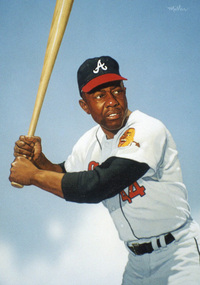 For the record: You probably don't care, but I'm arbitrarily awarding Hank Aaron (right) an extra 75 home runs for the ones he probably would have gotten if he had used steroids for the second half of his career. So Barry Bonds still has a way to go, and we're right not to get all excited.
For the record: You probably don't care, but I'm arbitrarily awarding Hank Aaron (right) an extra 75 home runs for the ones he probably would have gotten if he had used steroids for the second half of his career. So Barry Bonds still has a way to go, and we're right not to get all excited.
New York City Backs Down: For now, at least. Reacting to a storm of criticism, the NYC Mayor's Office of Film, Theater, and Broadcasting, in a distinctly defensive- sounding announcement, said it would redraft the proposed rules governing photo shoots on its streets. This may be a tactic meant to diffuse public criticism (the revised rules will be reopened for public comment a month from now, and the Mayor's Office could be hoping we'll have lost interest by then), but round one goes to photographers.
Nostradamus mode: I predict a crime wave when analog broadcast TV switches to digital a couple of years from now. You read it here first.
Lindsay Lohan's going to die: I hope I'm not predicting the future with this one, but if you're anywhere near my age, then you've been watching stars and celebrities self-destruct for decades now like I have. Name your favorites: Marilyn, Judy Garland, Hendrix, Janis Joplin, Jim Morrison, John Belushi, River Phoenix (original name: River Bottom, and I am not kidding), Chris Farley—the list is as long as your arm. It's such a shame, but doesn't Lindsay Lohan just have the aura of the next to go? She's such an appealing kid, and I would hate to watch the press in a frenzy over her funeral, but this picture just won't fade from the crystal ball. I'm afraid I'm gonna have to watch this. I really don't want to.
Still volatile after all these years: DPReview reports that digital camera sales have soared and DSLR sales lead the way, the latter with a whopping 75% growth. Still, margins are narrowing fast, and some companies are showing signs of R&D investment exhaustion. In a related news item, Sony has instituted a corporate blog for its DSLR division, which recently issued an official statement, probably intended to be reassuring, about its commitment to the product category. Many loyalists took the statement's breezy tone and lack of actual content as none too reassuring, at that.
Unfriendly fire: The Pat Tillman investigation revealed no enemy bullets anywhere in the area where he died, and there were three closely spaced shots in his forehead. There wasn't even a fire fight going on. That's no hero, folks—that's a murder victim. Not that the public will pay much attention to the investigation of what happened or to the bigger story of the spin-into-lies that followed.
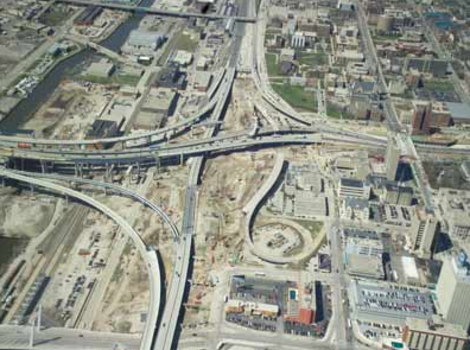
Milwaukee's massive public works project, the near-billion-dollar rebuilding of the huge Marquette Interchange (in progress, above; original below).
Putting two and two together: The Waukesha Freeman (I live in Waukesha, a small town in Wisconsin near Milwaukee) gets my vote for best local headline: "The Bridges of Waukesha County." What surprises me about the aftermath of the tragic and very unsettling bridge collapse in Minnesota—truly the stuff of nightmares—is that it's yet another example of people failing to put two and two together. Some years after Elvis died, I found two newspaper headlines that together made a great joke. One said that there had been over 400 Elvis sightings in the U.S. over some specified period of time; the other said that there were over 200 professional Elvis impersonators in the U.S. Two plus two...well, I'm not saying anyone's directly to blame for a catastrophic bridge failure, but more politicians than you can count have made "No New Taxes" their mantra, Minnesota's current Governor prominent among them. So now a bridge falls down, and we learn that our country's investment in infrastructure maintenance is minuscule, a small fraction of what it should be. Can't anybody put two and two together any more? Cut taxes to the bone and the least glamorous public expenses have to go—stands to reason that the two are connected, seems to me. I could be wrong. One thing's for sure: I'm never again going to make fun of my cousin Linda for carrying an emergency safety hammer in her car.
Hammerin' Hank: A brief coda to the Hank Aaron item above. My younger brother Scott was a practical joker in his younger years. One time, our family happened to be sitting next to Mr. and Mrs. Hank Aaron at a local restaurant. (I should mention, to set this up, that Bobby Dandridge was a basketball star with the Milwaukee Bucks at the time.) Scott, who was thirteen or so, went over to their table and asked Mr. Aaron for his autograph. When he took the slip of paper back, Scott stared at it feigning great surprise and exclaimed, "Hank Aaron?!? I thought you were Bobby Dandridge!" The Home Run King angrily said, "Well, give it back then!" but Mrs. Aaron burst into laughter. Scott apologized to Hank and explained that he was just pulling his leg, which Hank took good-naturedly, although he still didn't think it was very funny. Mrs. Aaron, on the other hand, chuckled for quite a long time.
______________
Mike
Posted on Sunday, 05 August 2007 at 05:55 PM | Permalink | Comments (19) | TrackBack (0)
The Sunday Sermon for August Fifth
This week's un-topical non-photography-related post is a little anecdote called "It Doesn't Always Pay to Think Too Much." You can find it on the Sunday Sermon page, but as I said, it doesn't have anything to with photography. Have a nice day of rest—and before you think too much, think of me, and my long-ago encounter with a certain jaded bitch.
_______________
Mike
Posted on Sunday, 05 August 2007 at 05:43 AM | Permalink | Comments (10) | TrackBack (0)
Saturday, 04 August 2007
Wedding Phototgraphy 101
By Antony Hands
So you are an amateur photographer who has been shooting for a while, and everyone in the family has seen you running around with your digital SLR for some time now, and have generally acknowledged that you are the family photographer. You took the pictures of Uncle Charlie’s 50th birthday, and he was pleased with the results, and your sister has asked you to take photos of her kids which turned out good.
Word gets around and your cousin decides that it would save her a lot of money if you would take the photos of her wedding. She says that she has seen your shots and thinks that you would be a great photographer for her big day. You would like to do it, because after all, you just love taking photos, and you feel that while you haven’t shot a wedding before, it can’t be that different or hard. You are very tempted to take her up on her offer and shoot the wedding.
Sound familiar?...
Featured Comment by Craig Norris, Hong Kong: "It's a good article, and it prompts me to tell my own related story. Among other things, I shoot weddings, and I got my start some years ago shooting the wedding of a friend who didn't have a budget to hire a "real" photographer. I'd bought my second hand Minolta X700 only a week before the wedding, and just as I was getting into a good flow during the wedding ceremony, the camera died. The little LR44 batteries for the meter had gone flat. I hadn't replaced them before the wedding—they were the batteries that came with the camera, so who knows how old they were. Luckily, the Olympus XA I was carrying as a backup camera used the same batteries, so after shooting a few frames with the XA, I took the opportunity of a pause in proceedings to swap the batteries from the XA to the Minolta and then the SLR was back in business. Boy, was I sweating when those batteries in the SLR went dead. And was I kicking myself for not having put fresh batteries in the camera before the wedding. And was I thankful that I had the spare camera, and was I really damn lucky that the spare camera used the same batteries as the main. The lesson I learned was the fact that the dictionary definition of the word 'professional' is wrong. The dictionaries all say that 'professional' means 'does something for pay.' But in reality, my direct experience taught me that 'professional' really means 'can be trusted to get it right.' I will never forget the stress of that first wedding when the batteries went dead. And that memory is what keeps me on my toes, and prevents me from becoming complacent. There's no better teacher than direct experience."
Posted on Saturday, 04 August 2007 at 03:31 PM | Permalink | Comments (15) | TrackBack (0)
New Line of Leica Lenses Announced
Apparently responding to price pressure from the Zeiss/Cosina lenses for the Zeiss Ikon, Leica Camera AG has announced a new line of price-conscious, compact spherical lenses made in Solms. Known by the time-honored name of Summarit-M, all four of the initial lenses in the line—a 35mm, 50mm, 75mm, and 90mm—have a maximum opening of ƒ/2.5. (The four initial lenses don't share a common filter size.) For the alphanumeric engravings on these lenses, Leica has reverted to the older rounded font used by Leitz and by Leica prior to the '90s. Albano Garcia tells me the typeface is called DIN (Deutsches Institut für Normung), that it's designed to be used in industrial German products and also in street and route signs, and also that it's trendy right now. Prices for the lenses are rumored to in the neighborhood of €1000 for the 50mm and €1250 for the others. Delivery is estimated for November.
_______________
Mike (Thanks to Albano, Matthew Allen, and Phule)
Posted on Saturday, 04 August 2007 at 09:56 AM | Permalink | Comments (23) | TrackBack (0)
Friday, 03 August 2007
Two Great Books
The previous post seems to have done something that I seldom do any more these days, which is to piss a few people off. Sorry. As my comeuppance, I've been inundated with people sending me their digital B&W work, which is no less than I deserve (and pretty pleasant, now that I stop to catch my breath).
For the record, some people are doing B&W very nicely these days—even with DSLRs. If they know what they're doing, that is, which not everybody does. Still and all, those highlights are often a problem (I'm eager to try to get my hands on a Fuji S5 just to try out its B&W capabilities). Also, plenty of people are out there making a horrifying hash of their attempts at monochrome. Just please don't assume I was talking about you personally.
As an antidote to that earlier post, I'd like to recommend two recent books.
Disclosure: Any time you access Amazon from this site, we get a few pennies from every dollar you spend when you're there (no matter what, or how much, you buy). It doesn't raise the price to you. But that's not the reason I'll ever plug a book—promise.
The first of these books earns the strongest of recommendations. Long ago, on the old version of this site, I gave a "strong buy" recommendation to the late Bruce Fraser's Camera RAW. I said it was one of those rare technical books that stands head and shoulders above the crowd, that can change the way you work, even the way you think.
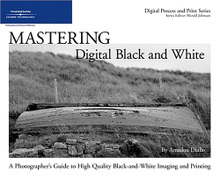 Such books are few and far between for me, but another that's just as much of a standout is Amadou Diallo's superb Mastering Digital Black and White: A Photographer's Guide to High Quality Black-and-White Imaging and Printing. I haven't learned this much from one book since Fraser's. It's actually a great book about digital photography and printing, not just of B&W. But there's more here to learn about B&W than I thought there was to know. Well written, well illustrated, well organized, well thought-out, and obviously the work of a guy who really knows his stuff—I might even venture to say, the work of a guy who loves his subject. Diallo seems to live and breath digital B&W, and much thought and research has gone into this work. This one should be short-listed for the technical library of anyone who's interested in the topic.
Such books are few and far between for me, but another that's just as much of a standout is Amadou Diallo's superb Mastering Digital Black and White: A Photographer's Guide to High Quality Black-and-White Imaging and Printing. I haven't learned this much from one book since Fraser's. It's actually a great book about digital photography and printing, not just of B&W. But there's more here to learn about B&W than I thought there was to know. Well written, well illustrated, well organized, well thought-out, and obviously the work of a guy who really knows his stuff—I might even venture to say, the work of a guy who loves his subject. Diallo seems to live and breath digital B&W, and much thought and research has gone into this work. This one should be short-listed for the technical library of anyone who's interested in the topic.
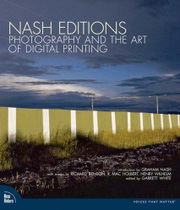 The other book, I would argue, is more in the nature of a mandatory purchase—for anyone. It's basically the first universally important book of photography's digital age. Nominally it is a contemporary account of original history, a documentary of digital printing's "incunable" period and one of its biggest early influences, Graham Nash. And it's important enough just for that. But it's also a wonderful collection of pictures, bringing together a large, beautiful, and indeed inspiring portfolio from the seminal work of this studio. It looks modest by its cover, and its title doesn't hint at its true importance—but don't let that fool you.
The other book, I would argue, is more in the nature of a mandatory purchase—for anyone. It's basically the first universally important book of photography's digital age. Nominally it is a contemporary account of original history, a documentary of digital printing's "incunable" period and one of its biggest early influences, Graham Nash. And it's important enough just for that. But it's also a wonderful collection of pictures, bringing together a large, beautiful, and indeed inspiring portfolio from the seminal work of this studio. It looks modest by its cover, and its title doesn't hint at its true importance—but don't let that fool you.
I'm speaking of course of Nash Editions: Photography and the Art of Digital Printing, edited by Garrett White, introduction by Graham Nash, with essays by Richard Benson, R. Mac Holbert, and Henry Wilhelm. This is a book that is just sure to bring you a lot of pleasure, and it absolutely belongs on the shelf of anyone who cares about digital imaging—or photography in the 21st century. A rare prize, this. (You can read more, including Nash's introduction to the book online, at Tom's Hardware.)
Neither of these books will waste your time or money. But if you can get only one, get Nash Editions. And prepare to spend some "quality time" with it. It will not only educate but inspire you, almost regardless of your taste in pictures. You have my word.
________________
Mike (Thanks to Arnaud)
Featured Comment by yunfat: "Got to see Mr. Nash at a Epson/Adobe workshop a few years ago and all I can say is wow, the guy really knows everything there is to know about state of the art printing, no BS. Not only that, but his experience seemed far more practical than almost any other printer out there, largely because he has been working with large format devices since their inception and can get anecdotal about things like $120,000 inkjet heads and modifying the hardware of $250,000 printers (voiding the warranty) in order to get the best prints from the printer back when there were only a handful of said printers in existence. I think that first printer he modified is on display at the Smithsonian now. Like whoa."
UPDATE: The Diallo title has elicited some dismissive remarks in the comments, so I thought I'd expand on my review of it a little. My feeling is that every technical book will have a lot of basic stuff that is already known by advanced readers. I've never read one that doesn't (well, since my first one, which was The Craft of Photography by David Vestal when I was 23, and I think I even knew some of the stuff in that one before I read it too). Any expert will find intermediate how-to books "a review," and 90% useless because they already know it all. So what? That's true of any how-to. The advantage of this book is that the process is presented in such a sensible, flowing way, that allows even a fairly advanced reader to proceed without undue annoyance, and the fact that the author presents the entire process as being subservient to the aims of a practicing photographer, rather than as technique for its own sake. Amadou also strikes a good balance between presenting his own preferred practices and acknowledging that some people may want to do things differently, which is not easy even for certain seasoned technical writers. I can hardly focus on most digital photography books, they're so breathless and fractured, but I found this one easy to read and easy to follow and I believe it will give most enthusiasts a very good foundation for doing the work they want to do in digital B&W. It's the best digital B&W book I've encountered yet. Certainly the easiest to recommend. Sorry if you don't agree, but if you don't, perhaps you're past the stage at which you need to read instructional texts. —Mike
Posted on Friday, 03 August 2007 at 07:36 PM in Books | Permalink | Comments (8) | TrackBack (0)
Photoshop Excess
Photoshop. Blessing or curse?
I have a positively canine appetite for looking at pictures, but sometimes I wonder if the web is too much of a good thing. I've never reached saturation level with viewing pictures, but amateur digisnaps can make that cliff's edge seem close indeed.
I've got nothing against seeing work that's not so good, if it's...sincere. What I'm really getting allergic to is "Photoshop excess." (Not that I mean to pick on Photoshop exclusively. Digitographers can abuse just about any image editor in multitudinous inventive ways.) If you could listen to my brain as I surf the web looking at mounds and mounds of near-anonymous amateur pics, it might go something like this:
Oversharpening again. Gawd. Careful with that axe, Eugene! That's about nine times more vivid than the harshest summer sun. If the world were like this every edge would be like a razor blade and we'd cut ourselves to shreds on life. At least we'd all have halos, though, like angels.
Oh, yes, oversaturation. Ubiquitous. This one's about four clicks past "Velvia Mode" on the zapometer. Thanks, guy—we never knew how nice oranges and greens in nature could look when they're oversaturated about 4X past where Mother Nature stopped. Where do you live, anyway, a Simpsons cartoon?
Now here's a guy who's found a cheesy, horrible Photoshop filter effect he likes, and he's laying it on with a trowel. I might try that. Except of course that I'd rather have electrodes attached to my gonads.
Just found that contrast slider, didja? Now, you're going to have to stop going nuts with that, or Mommy and I are going to take it away from you. You could hurt yourself.
Here we go—a nice sky filter. That is definitely not a color found in actual skies. It's how the sky will look when the Klingons are arriving, or maybe after the sun has expanded and the oceans have boiled away. Looks good in his picture, though.
And so forth.
The motto of Photoshop Excess: Anything that can be done, can be overdone.
I have a nice, brief little shorthand critique for any picture that suffers overmuch from such a syndrome: "XS FX." Excess effects, dude. Dial it back. Look up the word "subtlety." Then "restraint."
A.k.a. reality
And then there's black and white. I find DSLRs nearly useless for B&W because of the highlight issue. There's just no information there. I suppose slides have inured us to this problem in color, and I don't mind color pictures taken with DSLRs, but for B&W DSLRs are essentially useless. Even if there is some information, it's so coarse that the gradation has no subtlety at all. The effect is even worse than having no information/gradation in the shadows, which we're at least accustomed to struggling with.
Some photographers solve this by underexposing 2–3 stops and then jacking up the shadows somewhat with the Shadow/Highlight control in Photoshop (there's another control that can easily be used to excess—pictures with too much shadow compensation always remind me of something that got baked in an oven), but although this works sometimes, at other times it just makes the midtones look wrong, like a severe film/developer mismatch.
But of course, this doesn't stop photographers from publishing loads of B&W pictures. They range from pretty decent to downright awful.
Part of the problem may be that many people don't know what a good B&W picture is supposed to look like. How can they make one when they have little frame of reference? Even most highly skilled darkroom printers kept "reference prints" handy.
Color photographers don't have that excuse. Their frame of reference should be THE WORLD. Also known as reality. What's out there.
Maybe Photoshop could come with a "reality limiter" tool, like some engines have rev limiters. If you hit those sliders too hard, a pop-up box would come up that says, "You are exceeding what God intended. Proceed?"
______________
Mike
Featured Comment by Michael: "A very excellent rant. Yes indeedy. Love it. However. Many of the monochrome photos we love—I give you lith printing—are predicated on the loss of information. For various reasons we like things out of focus (um, bokeh, is it?), overexposed, underexposed, taken in a rainstorm, fogged over, Lensbabies, desaturated, etc., etc. Loss of information is where it's at. Blow a few highlights? Pah! Clumpy dark bits? Humbug! I give you Moriyama's dawg. But do keep the rants coming."
[Added by MJ:]
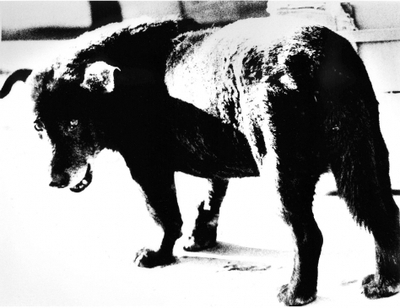
Daido Moriyama, Stray Dog, Misawa, Aomori, 1971
"There are many important pictures that do not contain the full Truth, that do not reveal Form, that do not show us coherence in its deepest sense. Examples, ones that are nonetheless among the most powerful pictures I know, include Daido Moriyama's Stray Dog (which about does it for dog pictures)...." (Robert Adams, Beauty in Photography, p. 32.)
Featured Comment by Phthalo Blue: "One nifty little 'fixer' is found in the Camera Raw dialog box—the Vibrance slider. When you ramp it up, it's meant to effect only the less saturated colors and make only minimal adjustments to colors already well-saturated. One day, I'm sure Adobe will come out with the God Filter—a couple of clicks and all images are made great. It could even have its own keyboard shortcut Command-O-M-F-G (Win: Control-O-M-F-G). Barring that, we all just struggle along. I don't so much hate poorly done images that you find everywhere. Lack of improvement over time is depressing, however."
Featured Comment by Matthew Brown: "I think another thing that doesn't help is that so many online photo communities and sites seem to encourage the 'turn everything up to 11' mentality with adjustments. E.g., in one of my favorite subject areas (railroad photos), one of the best known sites is railpictures.net, which applies pretty strict screening to get your photo published there. Thus, everyone wants to. The look they seem to want is sharpened to razor edges, saturation past the point of Velvia. Thus, lots of budding railroad photographers are being trained like dogs to prefer oversharpened, oversaturated images. The same happens on a lot of other sites, whether through formal screening or simply by user ratings or comments."
Mike replies: Matthew, thanks for this—enforced mass taste was really the reason for the demise of camera clubs in the '60s and '70s. In one sense, I'm sure online sharing sites are functioning much like camera clubs—pressuring for uniformity and conformity rather than encouraging independence and originality. (If there's one thing I've learned about photography enthusiasts over the years, it's that everybody seems to want to key to what will gain them the acceptance of others.) To the extent this is true, it's not a positive development in my opinion.
P.S. I'm not quite sure I agree with your assessment of railpictures.net, however...perhaps people should head over there and look through the Photos > Top Photos > Top of All Time and decide for themselves whether they think the presentation is overdone or not.
Posted on Friday, 03 August 2007 at 01:45 PM | Permalink | Comments (52) | TrackBack (0)
Thursday, 02 August 2007
Channeling David Vestal*
By Ctein
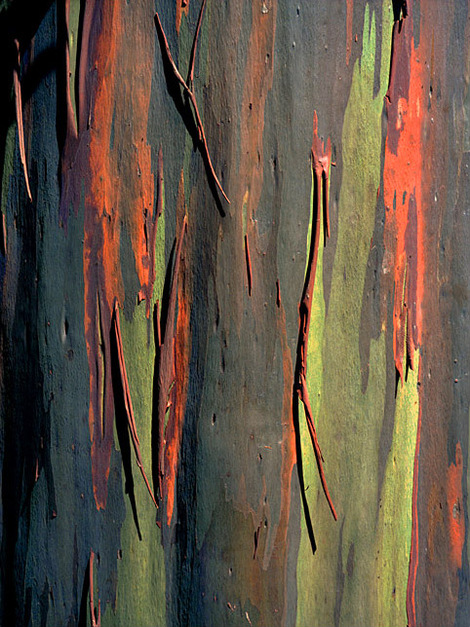
Of course, you can all tell just by looking at it that this photograph
was made with an auto-focus, auto-exposure, motor-drive camera, right?
Friend and photographer Laurie Edison was reading over a digital camera review I had lent her and chanced upon the "25 Years Ago..." column in Popular Photography & Imaging magazine. There was hot and heavy debate going on over whether real photographers deigned to use auto-exposure cameras. She was both amused and bemused that photographers would get so heated up over something like that.
I pondered a bit and observed that it has been this way for as long as I've been in photography. You've had photographers claiming (at different times) that real photographers don't use in-camera/TLR metering, auto-exposure, motor drives, and auto-focus (I may have missed a a few technical innovations they've railed against).** Decade after decade the same old tired battles get waged to the same pointless non-end.
I figured out what it's all about: photographers are incredibly insecure! They are terrified that the world won't take them seriously, because so many times they've heard "Photography isn't real art," "The camera does all work," "Where's the art in just showing what's already there?" ad nauseam.
Repeated over and over, the poor dweebs have internalized this message even if they don't realize it. Deep down inside, there's some part of them that is convinced they must prove that they're Real And Pure Artists™. What's the best way to reassure themselves? Proudly proclaim to the world how they eschew the advanced, soulless technology of the day and rabidly attack those who do for being less Pure and True than they. It's the old "I do serious work; they are mere poseurs" shtick.
It's finding common ground with the enemy: "Well, yes, those other photographers really don't do art, but I do."
Then there's "You don't hear painters discussing which brush they use and marveling over the latest paint technology, do you?" The implication is, "Like them, I am above an obsession with glittering gadgetry."
Hello?! Professional painters (as in, those actually trying to sell their art for money instead of just dabbling on weekends) do just that. It's true they have a lot less to "geek" about than we do, but I hang out with an assortment of them (I used to be one) and, trust me, they're no less obsessed with their tools and techniques than we are with ours. They just much less often have a reason to get that way.
In summary, yawn. The next time this nonsense rears its ill-informed and unattractive head, consider me pre-bored. It was stupid thirty years ago. It was stupid ten years ago. It's still going to be stupid tomorrow. Some things are constant.
________________
Ctein
*I have no idea if David would approve of the specific opinions in this article, but the attitude I'm copping/copying is pure quill.
**You can add "digital photography/printing isn't real photography/printing, because..." to this list, but I'm not going to devote much space to that because it is so mind-numbingly, oh, mind-numbing. Can you say "Those who don't know history are doomed to repeat it?" That's right, I knew you could.
Mike adds: Fun story: I used to work with a guy whose predecessor on the job was an old-timer who shot with nothing but 4x5. Apparently he shot everything with a Speed Graphic. He did everything on 4x5, even copy work. He would leave the studio to cover an event taking with him just his Speed Graphic and six sheets of film. He didn't think much of anybody who needed more exposures to cover an event, and was contemptuous of anyone who used smaller film sizes. (My friend said that photographers of this generation would even refer to medium-format Rolleiflexes as "miniature format" cameras(!).) Who knows, maybe he would even have said they "weren't real photographers," just as Ctein says.
Posted on Thursday, 02 August 2007 at 07:12 PM in Ctein | Permalink | Comments (26) | TrackBack (0)
Wednesday, 01 August 2007
The Jeff and Michael Show (And There's More)
If you haven't downloaded this already, you're going to want to check out the Mutt and J...er, no, sorry, the Jeff and Michael show.
What is it? Only six hours and forty minutes of two of the world's leading experts on digital printing, Jeff Schewe (left, above) and Michael Reichmann (right), taking you on a guided tour of pretty much everything pertaining to photographic fine printing circa 2007. Set in Michael's studios in Toronto and filmed by Chris Sanderson, the series of video downloads, called "From Camera to Print," only cost about as much as a middlin' technical book (US$35). Unforeseen and very heavy demand for the program is apparently putting a lot of strain on L-L's servers, so you're asked to download only one part at a time, as you're ready to watch it.
It's good. I haven't watched the whole thing yet. But it's good.
There's more.
Using some of the profits from the video as "seed funding," Michael Reichmann and The Luminous Landscape have instituted The Luminous Landscape Endowment, a not-for-profit foundation that will call for proposals for funding from fine-art photographers worldwide. A small independent panel will review applications and award grants to deserving projects. Michael has promised that administration costs will be kept to an absolute minimum and that virtually all of every donated dollar will end up in the hands of beneficiaries. Details about how to apply will be announced soon.
How viable a source of funding for photography the Luminous Landscape Endowment will become depends on many factors, but it's very heartening to note that L-L readers have stepped in with significant voluntary contributions already to augment the fund. Keep checking in at L-L for future news.
Compared to other arts and other disciplines, the amount of grant money available to photographers is relatively paltry, and competition for traditional grants can be fierce. Let's hope that the Luminous Landscape Endowment will become a significant player among institutions supporting photography worldwide.
_______________
Mike
Featured Comment by Ken Tanaka: "Although I am not a landscape photographer, per se, I enjoy Michael's "Video Journal." It's unique, generally entertaining and nearly always informative. Speaking as an 'old' filmmaker/videographer, Chris does an excellent job of shooting and editing the material particularly considering the sometimes challenging locations and subjects. Yes, some of Michael's videos can be just a bit too much Michael and not enough subject, but hey he's not a "professional" interviewer. I have not been quite as keen on Michael and Jeff's "tutorials" (example: their Lightroom series) for a few reasons. They have a rather amateur, 'winging-it' appearance, with long stretches of footage locked down to show nothing but Jeff and Michael sitting in front of their computers yakking. These fellows also have very healthy egos, which is fine. But it sometimes oozes through as a condescending, self-important style of presentation, particularly from Jeff. Perhaps my biggest complaint is that their previous tutorials just don't get to the damn points in a concise manner. Ramble, ramble, gee look at what I did, yak, yak...oh by the way if you click this button it opens up an alternate UNIVERSE! Gleaning anything useful can be an Easter egg hunt. (Michael Tapes' free Lightroom tutorials on RawWorkflow are much better for orienting new users.)
"That aside, I purchased their new "From Camera to Print" series and have watched a few chapters. Yes, it suffers from some of the characteristics I noted. Yes, there is a lot of relatively low-value banter. But it seems a bit more structured than the usual Mike 'n' Jeff show and contains some useful pointers. So I recommend buying this series if a) you are an avid photo post-processor and printer of late-beginner / intermediate skill level and b) have access to a very good broadband connection to the Internet. The downloadable files for this 6+ hour series are quite large. As Mike noted, the cost of $35 is really on par with a computer book and I don't know any such book that has as grand of a beard as Jeff Schewe's. (Supporting Michael's new grant foundation with this purchase may make you feel good, but it's really a bit of a red herring.)"
Posted on Wednesday, 01 August 2007 at 03:43 PM | Permalink | Comments (7) | TrackBack (0)
'Splain Me This
Can someone please explain to me why this is a good idea? When, by some miracle, a standard in an unstandardized field has been successfully adopted and universally accepted, whereby compression standards are not cross-incompatible and a constant headache, why blast that agreeable situation asunder? Moreover, what evil purpose does the change serve? How does it further Gates & Co.'s corporate hegemony or global greed? I can't see what advantage they think it's going to get them.
So that I'm not misunderstood, I'm not making statements here. I really don't know whether this is a potentially good or bad situation and I really don't understand the motives behind it, and I would appreciate being schooled. Anybody know?
_____________
Mike
Posted on Wednesday, 01 August 2007 at 10:33 AM | Permalink | Comments (41) | TrackBack (0)
Search
Categories
- Around the Web (252)
- Baker's Dozen (63)
- Blog Notes (619)
- Bon Mots (10)
- Book of the Week (15)
- Books (532)
- Brief Camera Impressions (2)
- Camera Reviews (140)
- Cameras, new (814)
- Cameras, old (263)
- Carl Weese (23)
- Collecting (53)
- Computers (102)
- Ctein (377)
- Digital Techniques (74)
- Eamon Hickey (2)
- Editing and Portfolios (82)
- Exhibits (90)
- Film and Darkroom (139)
- Film Fridays (8)
- Followups (186)
- From the Archives (40)
- Geoff Wittig (4)
- Gordon Lewis (15)
- Interviews (7)
- Jim Hughes (31)
- John Camp (8)
- John Kennerdell (17)
- Ken Tanaka (11)
- Kirk Tuck (8)
- Legal and social issues (113)
- Lenses (336)
- Mini-Portfolios (6)
- Morning Coffee (32)
- Music Notes (111)
- News and Occasions (512)
- Obituaries (87)
- Off-topic posts (539)
- Open Mike (366)
- Oren Grad (1)
- Past Blasts (24)
- Peter Turnley (67)
- Photo equipment (361)
- Photo industry (180)
- Photo-tech (231)
- Photographers, current (243)
- Photographers, historical (172)
- Photographic aesthetics (232)
- Photography businesses (30)
- Photojournalism (85)
- Polls (17)
- Print Offers (271)
- Printers and Printing (174)
- Quote o' the Day (96)
- Random Excellence (249)
- Random Snaps (138)
- Reader Prints (7)
- Recommended Cameras (14)
- Reflections (209)
- Reruns (24)
- Roger Overall (2)
- Sarge (1)
- Satire Alert! (26)
- Shooting Skills and Camera Handling (9)
- Shooting techniques (162)
- Software (75)
- Sunday Support Group (73)
- TOP contests (6)
- TOP's Own Books (10)
- Visual Culture (284)
- Websites and links (142)
- Weekend Exercises (5)
- Workshops (19)
- Your Turn (9)
